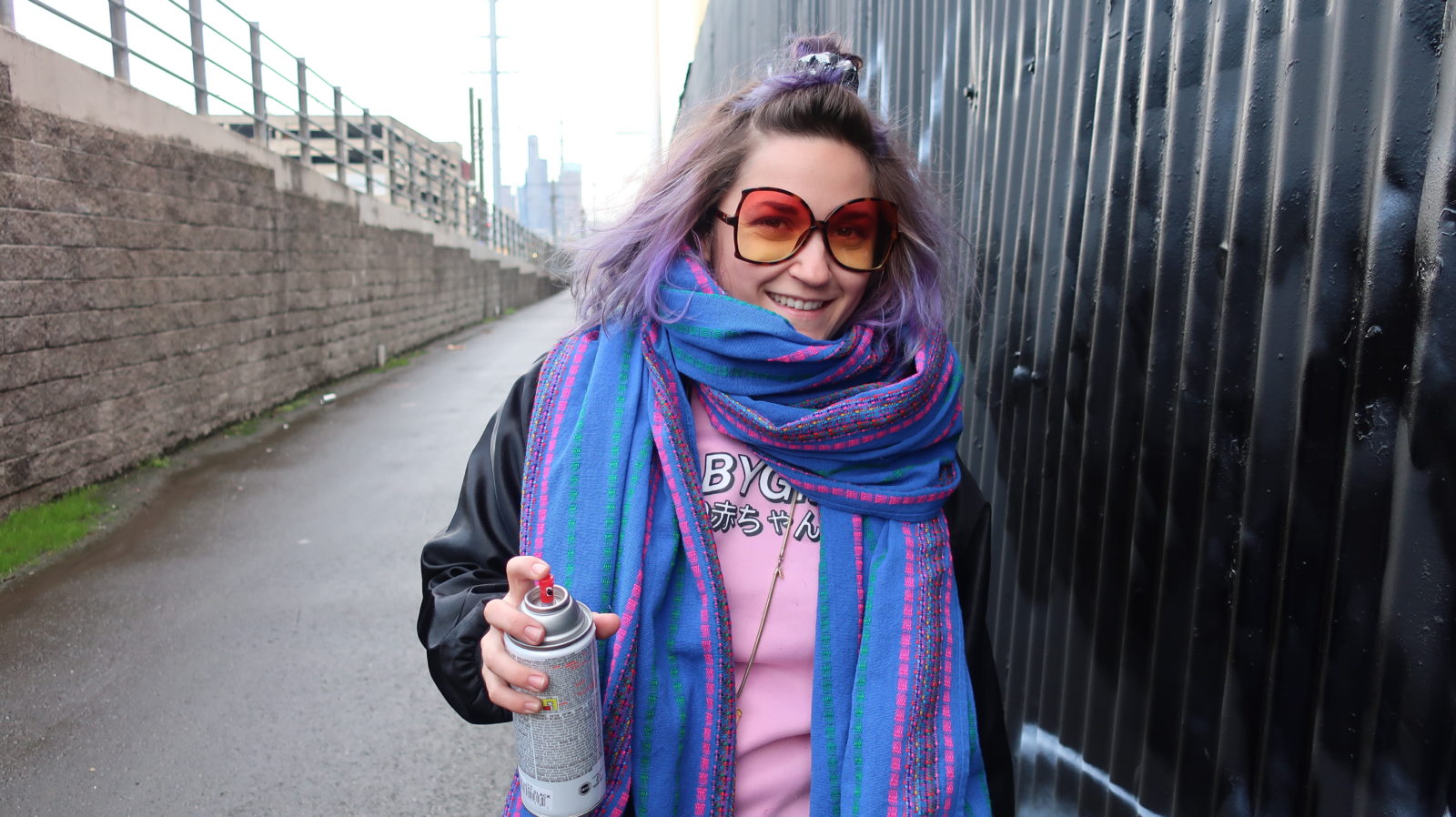March 2, 2018
Volunteer Profile: Makaela
Makaela is an Urban ArtWorks volunteer, helping us out and also putting some paint on walls. We asked her for her thoughts on public art and its role in creating engaged communities:
Which project(s) did you work on with us? Which one was your favorite?
As a relatively new member of this community, I’ve mostly been SODO Track’s “graffiti eraser” thus far. However, I was given the opportunity to volunteer for Urban ArtWorks the summer party at Cuidad in Georgetown, and I had a really wonderful time socializing and acquainting myself with local artists/volunteers.
Tell us about yourself, where did you grow up / how did you find yourself in Seattle?
As an Olympic Peninsula native, I’m drawn to outdoor sports and activities. I rode horses, love to backpack/kayak/hike/swim/be outside/you know what I mean. After trying out a few schools, I found my “people” in Bellingham at WWU. After school I lived in California, Hawaii, Seattle, Caribbean Colombia, and now back to Seattle. All of which have been artistically indulging and informative.
What in your personal life has influenced you to choose your career path?
Currently I do admin and production at a local screen printing/embroidery company. My living and work experience combined with traveling has decidedly changed my career path in an unexpected way. My girlfriend and I are arduously working on our plan to travel and seek permanent residence in Central or South America to open our own business.
How did you find out about Urban Artworks?
As most Seattlites, I used to work in the restaurant industry which is synonymous with Seattle’s arts populous. A coworker at one of Linda’s restaurants shared UA’s info with me.
What do you do to keep yourself motivated and interested in your work?
Well, this may be a little crass, but good coworkers/boss and a paycheck keeps me motivated at my nine-to-five. But, artistically, I have very motivated family and friends that push me to paint/draw/etc., especially when I could be doing more. My recent travels and experiences in tropical areas inform a lot of the animals and plants I paint and draw with my ladies.

Where do you get your inspiration from as an artist?
Watching people, seeing how friends and family interact with each other. My biggest influences are women – my sister, my mom, my girlfriend – so I think that’s why I draw women. On top of that, everyone embodies some sort of funny animal to me (sorry!?) so they all have animal faces that I deem appropriate.
Which is more important to you, the subject of your painting, or the way it is executed?
It has to both. Plain and simple.
In your opinion, what are some ways that public art helps create a sense of community?
Art is, in most ways, a physical manifestation of human emotion and contemplation. To me, it is the stuff that fills the space, the matter “between-the-lines.” It can be intensely communicative, reflective, analytical, revealing, secretive, fanciful, cathartic, lighthearted, comedic, dramatic, etc., everything. What better way to share values and ways of life (or work through differences!) than through creative processes?
What are your thoughts about public art as a tool to reach young people?
Probably one of the most effective educational outlets. Doesn’t even have a language barrier! I’m still friends with my 8th grade art teacher – who now teaches art and creative writing conjunctively to alternative high school students. In college, I had an English professor whose finals/tests were intentionally creatively open-ended so that we could prove our knowledge in a format that best suited the individual. For example, instead of handing out multiple choice tests or typical exams, I turned my book into a sculpture project to convey the themes of the novel, or drew a short comic using concepts we learned in class, etc. Of course this methods can also be used outside the classrooms in extracurricular programs, clubs, remedial education, youth-at-risk, community service, the list goes on. More art in public programs!


